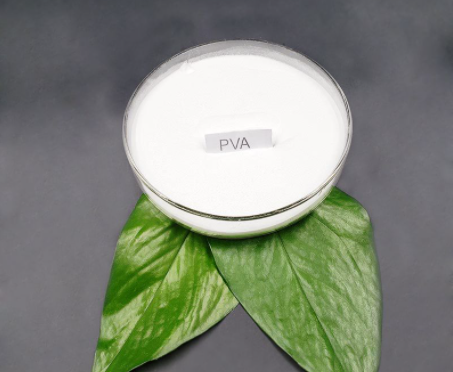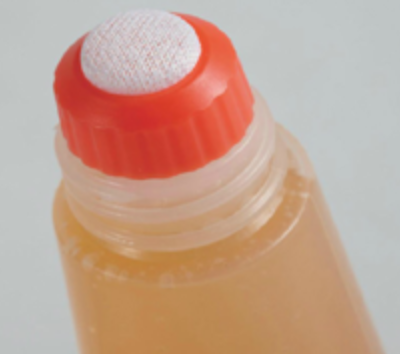Polyvinyl Alcohol (PVA), a colorless, water-soluble synthetic resin used primarily in the treatment of textiles and paper, is unique among polymers in that it is not formed in a polymerization reaction of a single monomeric precursor molecule called a monomer. Instead, PVA is made by dissolving another polymer, polyvinyl acetate, in an alcohol and treating it with an alkaline catalyst.
When the reaction proceeds to completion, the product is highly soluble in water and practically insoluble in all organic solvents. Incomplete removal of the acetate group produces a resin with low solubility in water and high solubility in some organic liquids.

PVA is used in sizing agents to provide greater strength to textile yarns and to make paper more resistant to oil and grease. It is also used as a component of adhesives and emulsifiers, as a water-soluble protective film, and as a raw material for the preparation of other resins. PVA can be made into the resins polyvinyl butyral (PVB) and polyvinyl acetal (PVF) by reacting with butyraldehyde (CH 3 CH 2 CH 2 CHO) and formaldehyde (CH 2 O). PVB is a tough, clear, tacky and waterproof plastic film widely used for laminated safety glass, mainly in automobiles. PVF is used for electrical wire insulation.
The main chemical component of PVA, polyvinyl acetate, was discovered in 1912 by German Fritz Klatte. The resulting glue does not emit odors or dangerous fumes and is very safe to work with bare hands.
In addition to "real" wood, you can also use it on plywood, particle board and MDF. It can be used as a high performance sealer, primer, adhesive and dust suppressant.
PVA solidifies with good air circulation and dries fastest at room temperature. When you clamp the glued pieces, you get the strongest seal possible. It has a very high bond strength and is fast drying.
PVA is flexible, permanent, and only toxic when you eat it. It has a neutral pH.
PVA is water soluble. You can add water to the thick glue yourself to make a thinner, less sticky glue. It is best to add a small amount of water to the glue at a time (rather than the other way around) and mix well to ensure that you do not over-dilute it.

PVA is soluble in hot and cold water. Solutions are usually prepared as follows.
Add the powder slowly to cold water to avoid clumping, as it will become viscous and the tendency to clump will increase as the temperature rises. In some cases, water below ambient temperature can be used to reduce this risk.
Once the powder is completely dispersed, the mixture is heated to the temperature at which the polymer is dissolved.
Mixing continues at this temperature until the PVA is completely dissolved. Depending on the material grade and the efficiency of the mixing system, this may take some time to achieve.
Dispersing the PVA into hot water eliminates the heating phase, thereby greatly reducing processing time.
The rapid dispersion of the powder eliminates handling errors. The powder is completely dispersed before the viscosity begins to increase, achieving accelerated dissolution and better batch consistency.
Squeeze the glue onto the surface of the two pieces of wood to be glued together
Remove any excess or spillage immediately with a damp cloth
Apply a thin layer of glue to the surface of the two pieces of wood using a brush
Push the pieces together and rub the surface from side to side to remove any trapped air
Grasp one or both G-clamps and hold the pieces firmly
Allow to sit for 24 hours before removing the clips
Sand off any dried excess glue
TANGPENG manufactures HPMC, RDP and CMC, if you need to know more, please contact us.
Previous: Lightweight Material Spray Adhesive TONGGUT9
Next: Cell Culture Basics: Equipment, Fundamentals and Protocols
Copyright:@2020-2021
Comments Please sign in or sign up to post.
0
0 of 500 characters used